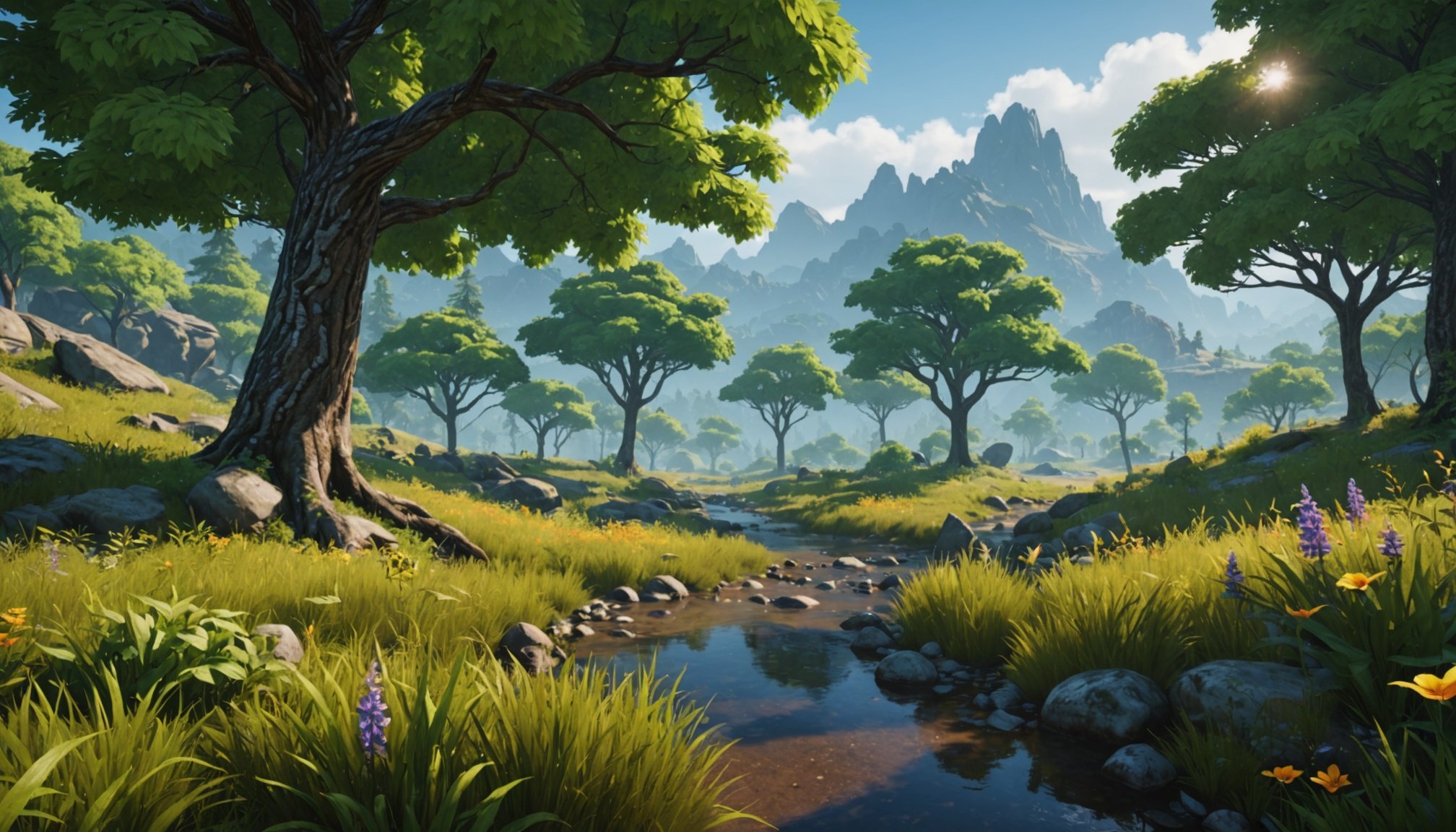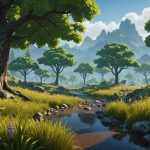Techniques for Realistic Vegetation Design
Creating lifelike vegetation in digital environments is an art that demands attention to detail and precision. Among the key factors, texture and lighting play pivotal roles. They enhance vegetation design techniques by adding depth and realism. Correct lighting direction can highlight the textures and veins in leaves, creating variation and richness, which are essential for realistic plant rendering.
Incorporating procedural generation helps developers produce diverse flora effectively. This approach automates repetitive tasks, allowing for assorted plant types and sizes without manually crafting each one. As a result, environments appear more natural and varied, reflecting real-world diversity.
This might interest you : Essential Elements for Crafting Authentic Cloud Scenery in Flight Simulation Games
Layering techniques are invaluable in providing depth to digital scenes. For instance, overlapping foliage such as bushes, undergrowth, and trees creates layers, giving the illusion of distance and density. This method not only contributes to a fuller and denser appearance but also increases the complexity and interest of a digital landscape.
By focusing on these tactics, designers can ensure that their vegetation design techniques result in realistic plant rendering. The immersive and visually striking outcomes can significantly enhance a viewer’s experience in any virtual setting.
Also to read : Top Strategies for Seamlessly Integrating Voice Recognition in Story-Driven Video Games
Innovative Tools and Software for Vegetation Creation
When diving into vegetation software for game development, understanding the range of available tools is crucial. Game development tools are vital in crafting immersive environments, with several options offering distinct features.
Overview of Popular Vegetation Modeling Tools
Among the top contenders in vegetation software, software like SpeedTree, Blender, and PlantFactory stand out. SpeedTree, known for its powerful, user-friendly interface, allows the creation of realistic trees and foliage. Blender, though primarily a 3D modeling tool, offers robust systems for vegetation modeling, enhanced by community plugins. PlantFactory excels in generating procedural vegetation models suited for extensive and detailed environments. Each tool provides varied user experiences, with SpeedTree often highlighted for its accessibility owing to its intuitive controls, while Blender is praised for its versatility at no cost.
Tips for Efficient Workflow in Vegetation Modeling
To optimise efficiency in vegetation modelling, utilising templates and reusable assets is beneficial. Establishing a library of assets can significantly streamline creative processes. Integrating multiple software can lead to enhanced results, with each application complementing the others’ strengths and weaknesses. For instance, building basic models in Blender and refining in SpeedTree can yield superbly detailed assets.
Integrating Natural Elements into Game Environments
Incorporating natural element integration into game environment design enriches the player’s experience by creating immersive and dynamic worlds. One key aspect is balancing vegetation with gameplay mechanics. When vegetation is intelligently integrated, it can enhance gameplay by serving as strategic cover, influencing character movement, or impacting visibility within the game.
Strategies for Seamless Environment Transitions
To ensure seamless transitions between different environments, developers can utilise techniques such as dynamic loading and careful asset design. This allows diverse natural settings, like forests merging into deserts or mountains, to feel interconnected and believable. Ensuring these transitions are smooth maintains player immersion and prevents disruption in engagement.
Moreover, the importance of seasonal changes in vegetation cannot be overlooked. Adapting the environment to reflect different seasons not only adds realism but also creates variety in the visual and tactical aspects of gameplay. Observing how vegetation changes over time can influence strategy, such as pathways becoming blocked by snowfall or new gameplay opportunities emerging as flora changes in form and function.
In summary, natural element integration in game environment design enhances realism and strategic depth, contributing to a more engaging player experience. By focusing on seamless transitions and seasonal changes, game developers can create captivating and ever-evolving landscapes.
Case Studies of Successful Open-World Games
Exploring how game case studies illuminate the art of designing lush and immersive worlds provides a glimpse into the craft of creating renowned open-world experiences. Specifically, successful vegetation implementation plays a pivotal role in defining these virtual landscapes.
Analysis of Game Titles with Outstanding Vegetation Design
Within the realm of digital exploration, certain game titles distinguish themselves with their intricate vegetation design. These meticulous designs provide sensory-rich immersion, where players feel absorbed into the environment. Key features include:
- Realistic plant life dynamics that respond to player interaction.
- Varied flora that reflects the narrative and setting of the game.
Lessons learned from top titles demonstrate the importance of balancing visual fidelity with performance, ensuring vegetation does not merely exist as a backdrop but as an interactive and integral element.
Interviews with Industry Experts on Vegetation Techniques
Insights from seasoned game developers reveal that effective vegetation implementation often involves overcoming significant challenges. Experts cite limitations in hardware performance and balancing aesthetics with functionality as key hurdles.
Emerging trends in vegetation design point towards integrating artificial intelligence to enhance procedural generation, allowing for more diverse and lifelike ecosystems. As technology advances, the future promises vegetation techniques that offer unparalleled visual experiences in gaming worlds.
Community Resources and Visual Assets
The game developer community is incredibly valuable for those embarking on game development projects. Engaging with online forums and communities like Unity, Unreal Engine, and Discord channels can provide essential support. These platforms offer a place for developers to exchange ideas, share solutions, and gather feedback, enhancing the collaborative spirit that is crucial for successful project development.
Visual asset libraries play a significant role in game development, shaping the game’s visual appeal and functional versatility. There are numerous resources available, both free and paid, catering to varying budget constraints and artistic needs. Websites like Textures.com provide a wide array of assets suitable for diverse game styles, while services like TurboSquid offer premium assets for a polished, professional end product.
In this collaborative arena, receiving constructive feedback is just as fundamental as creative input. Engaging with the game developer community not only brings new insights but also encourages discussions about design choices and development strategies. Such interaction bolsters a creator’s experience, ensuring their vision is well-crafted and well-received. From forums to asset repositories, the empowerment that these communities and resources offer to developers is immeasurable.











